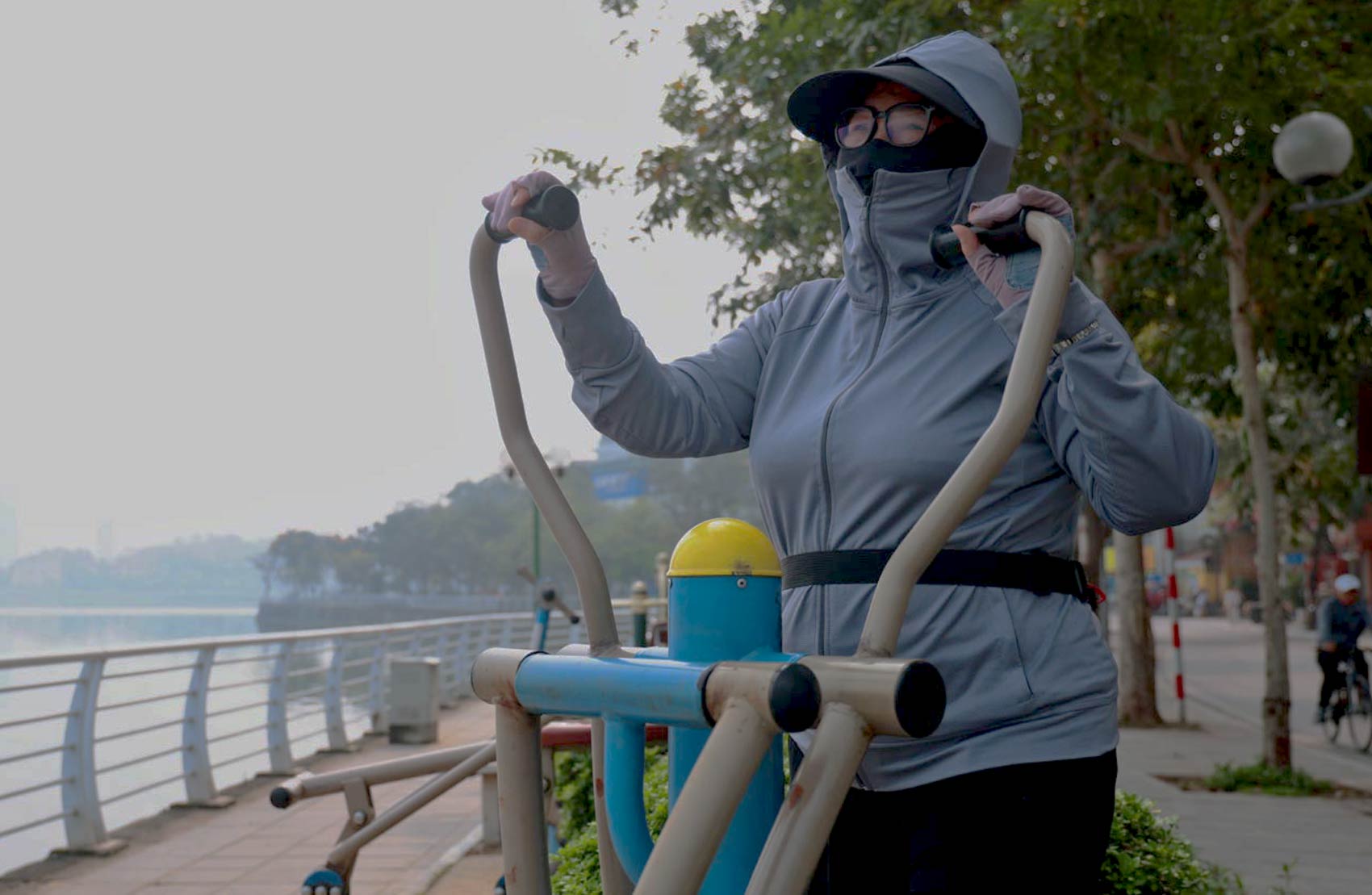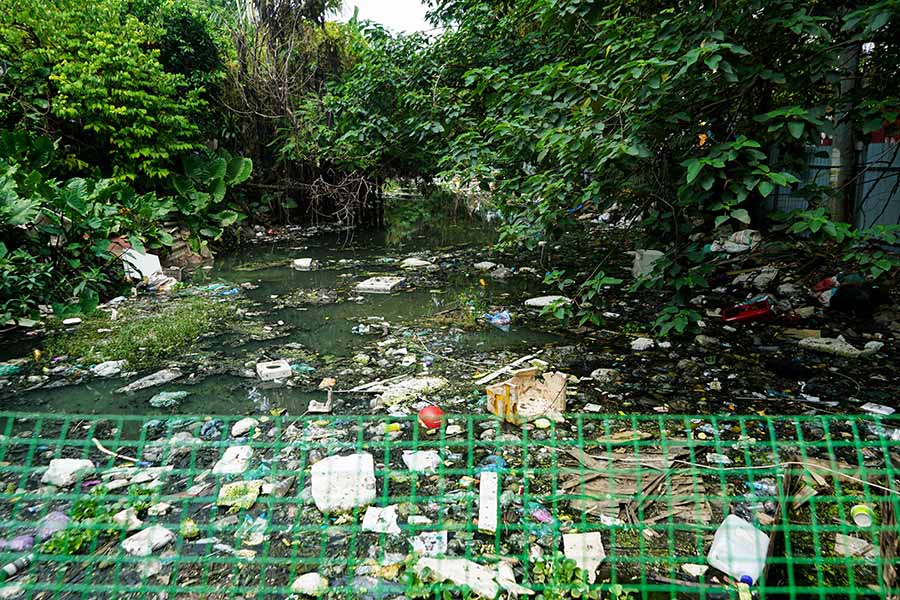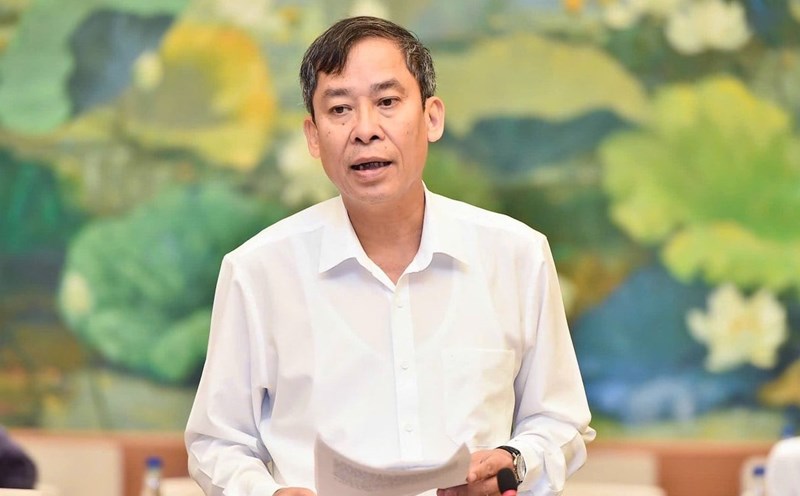Waste and air pollution: Unresolved issues
Speaking with Lao Dong, Associate Professor, Dr. Vu Thanh Ca (Hanoi University of Natural Resources and Environment) said that according to the National Environmental status Report 2016 - 2020, the amount of solid waste in urban areas nationwide is about 35,624 tons/day (about 13 million tons/year), an increase of 10 - 16% per year.
In rural areas, this figure reaches more than 28,000 tons/day, equivalent to 10.4 million tons/year. Although the urban collection rate has reached over 90%, in rural areas, about 37% of waste is still floating in the environment.
The most common form of treatment is still landfill (accounting for 70%). Many localities have invested in in incinerators, but most of them are not qualified, lacking fine dust and toxic gas filtering equipment, making incinerators the source of air pollution.
Worryingly, the situation of burning agricultural by-products after harvest or discarding disease-prone animal carcasses still exists, posing a potential risk of epidemics and pollution of soil and water.

Associate Professor, Dr. Vu Thanh Ca acknowledged that plastic waste is another danger, because it takes hundreds of years to decompose. When they drift out to sea, they harm fish, birds and sea turtles... all of which play a role in balancing the ocean ecosystem.
In addition to reducing aquatic resources, plastic waste also negatively affects coral reefs and marine grass, reducing the natural value of the ocean.
From the end of 2024 to the beginning of 2025, Hanoi has been in the group of the most polluted cities in the world for many days, with the AQI exceeding 250, a very poor level, approaching danger. Ho Chi Minh City also often faces dust and smoke, especially from traffic.

The main sources of emissions include transportation, industry, straw burning, production in craft villages and the use of fossil fuels, said Mr. Ca, emphasizing that studies have shown that motorbikes and gasoline-powered and diesel cars are the leading culprits of toxic gas pollution and urban heat island effects.
In particular, among the polluting vehicles, the number of motorbikes is very large and the emission standards are low, so air pollution caused by motorbikes is very significant.
What is the solution to the environmental problem?
According to Associate Professor, Dr. Vu Thanh Ca, the most important principle is to prevent pollutants from the source. For waste, it is necessary to classify it at source into three groups: recyclable, reusable; unrecyclable; and hazardous waste. Based on that, organize appropriate collection, transportation and treatment.

In rural areas, it is necessary to ban straw burning and gradually eliminate substandard incinerators, encourage the cultivation of organic fertilizer from agricultural by-products and leftover food instead of burying or burning.
In urban areas, it is necessary to tighten supervision and punishment of violations in waste classification and dumping, while mobilizing social resources in collection and treatment.
The waste fee should be applied according to the principle of "the person causing the pollution must pay", which is enough to cover costs but suitable for people's ability to pay.
Regarding air pollution, Associate Professor, Dr. Vu Thanh Ca said that the fundamental solution is to reduce gasoline and diesel vehicles, especially motorbikes, replace them with electric vehicles and develop public transport.
According to Mr. Vu Thanh Ca, in a crowded city, using motorbikes is quite dangerous, potentially causing traffic accidents.
Reducing the number of motorbikes using gasoline engines not only reduces air pollution but also reduces traffic accidents and beautifies urban landscapes.
Long-term solutions must be associated with the development of a modern public transport system, especially urban railways.
This is an infrastructure that requires large resources and a long time, so it needs to be started early and deployed synchronously.
The process of converting vehicles must go hand in hand with the completion of the public transport network.
For poor households with livelihoods dependent on gasoline motorbikes, there should be support policies and preferential loans, studying according to the successful hunger eradication and poverty reduction model in Vietnam.
Reducing air pollution in Hanoi and Ho Chi Minh City also brings side benefits such as reducing congestion and traffic accidents, thereby creating sustainable economic and social values.
Associate Professor, Dr. Vu Thanh Ca emphasized that reducing environmental pollution is not only a technical problem but also a social responsibility. The participation of local authorities, communities and financial transparency and fairness mechanisms is the decisive factor.










